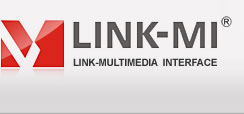Thought all you needed to get a 4K TV working is HDMI 2.0? Guess again. The next generation of content protection is called HDCP 2.2, and not only is it not backwards compatible, many new 4K devices don't even support it.
So it's possible that the 4K TV you bought last year, or even the receiver you buy this year, might not be able to receive/pass all future 4K content.
Sound crazy? Sadly, it's not. Here's the skinny.
What it is
Copy protection/content protection has been around since the VHS era, something anyone who tried to copy a Blockbuster rental can tell you. Back then it was called Macrovision, which evolved to CSS for DVD and finally HDCP, which stands for High-bandwidth digital Content Protection, for Blu-ray players and HDTV devices like satellite and cable boxes.
HDCP 2.2 is the latest evolution of copy protection. It's designed to create a secure connection between a source and a display. Ostensibly this is so you can't take the output from a source (a Blu-ray player, say) and plug it into some kind of recorder, to make a copy of the content. DRM, the encryption of the content itself, is a separate issue. HDCP doesn't care what goes across the cable, as long as that cable is secure.
It does this by creating encrypted keys between the source and the display (called the sink). Enabled repeaters, like receivers, can be in the chain as well. The source and the sink need to be in agreement, understanding their keys, or no content gets transferred. If you've ever hooked up gear and gotten a blank screen (or turned on gear in the wrong order and gotten a blank screen), this HDCP "handshake" is usually the issue.
HDCP isn't solely over HDMI. It can be implemented to work over DVI, DisplayPort, USB, and more.
So what's new? The encryption on the keys in version 2.2 is more advanced than previous versions which, in theory, makes the whole chain harder to break. One other interesting change with 2.2 is a "locality check." The source sends a signal to the sink, and if the sink doesn't get that signal within 20ms, the source kills the connection. In theory, this shouldn't cause any issues in home setups, even over long HDMI runs (unless you have more than 3,740 miles of cable).
This is about UltraHD 4K
You don't need to ditch your gear just yet. HDCP 2.2 is essentially about UltraHD 4K copy protection. So for now anyone with (or buying) a non-4K 1080p TV doesn't need to worry. Once we start seeing more widely available 4K content, it will be more of an issue.
Which leads us to...
Your current gear is not 2.2-upgradable, but that's probably OK
There's no firmware upgrade that will get 2.2 working on a non-2.2 product. At least, not on a product that wasn't designed with at least some idea about 2.2. For the time being, as we've said, it's not a big deal if you're planning on sticking with 1080p.
Your current devices will work fine with new HDCP 2.2 devices, presuming you're not trying to send content with 2.2. As in, your current Blu-ray player will send 1080p to a 2.2-enabled receiver, or to a 4K TV, with no issues.
Wireless
You may also "see" HDCP 2.2 in new wireless gear, like those with Miracast or WirelessHD. Since wireless 4K has only recently been announced at all, this isn't an immediate issue. It's safe to assume, though, that to get the content to and from the wireless transmitter and receivers, you'll still need HDCP 2.2 on your receiver/source and display (so the whole chain is 2.2).
What TVs?
The current crop of 4K TVs from Samsung, LG, Panasonic, and Sony, etc. list HDCP 2.2 compliance in their specifications. This is a good sign. If you have a 4K TV already, or are looking at a non-tier 1 brand, make sure you scour the specs for HDCP 2.2. If it's not 2.2-compliant, you might be out of luck as this new encryption is rolled out.
As in, if you bought one of the first 4K TVs, generally released in 2013, it may not work with whatever dedicated 4K content comes out in the near future.
Not Just TVs
The problem extends throughout the chain. Run your HDMI through a receiver or soundbar? They'll need to be HDCP 2.2 compliant as well. It's important to note, there are many receivers shipping this year that have HDMI 2.0, but are not HDCP 2.2 compliant. That might be an issue eventually, as we've discussed.
To put it another way, all HDCP 2.2 devices will have HDMI 2.0, but not all HDMI 2.0 will have HDCP 2.2. Very few receivers have 2.2 right now.
This is important to consider, since most people hold on to receivers a lot longer than than any specific TV.
Resistance is Futile
In reality, HDCP 2.2 will be broken, just like all its predecessors (including 2.0 and 2.1). Such is the nature of codes and codebreaking. So why bother? To make casual copying difficult, for one, and to appease shareholders on the other. The movie industry is a big, publicly traded, business, and it's any CEO fiduciary responsibility to do everything they can to make sure their product is as profitable as possible (i.e. not easily stolen).
The result, unfortunately, is a potential hassle for those of us not trying to steal content, and just trying to set up a new TV.
For now, HDCP 2.2 is something to have in the back of your head, but not something worth worrying about. That is, unless you're planning on making the move to 4K, or buying something that will last a while, like a receiver. Then it's worth making sure it has HDCP 2.2 just to make it as "futureproof" as possible. |

